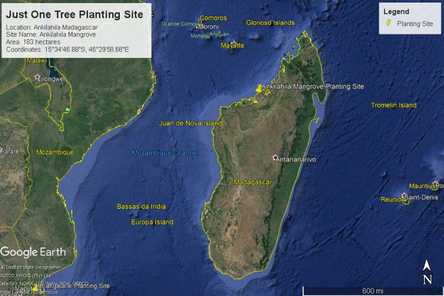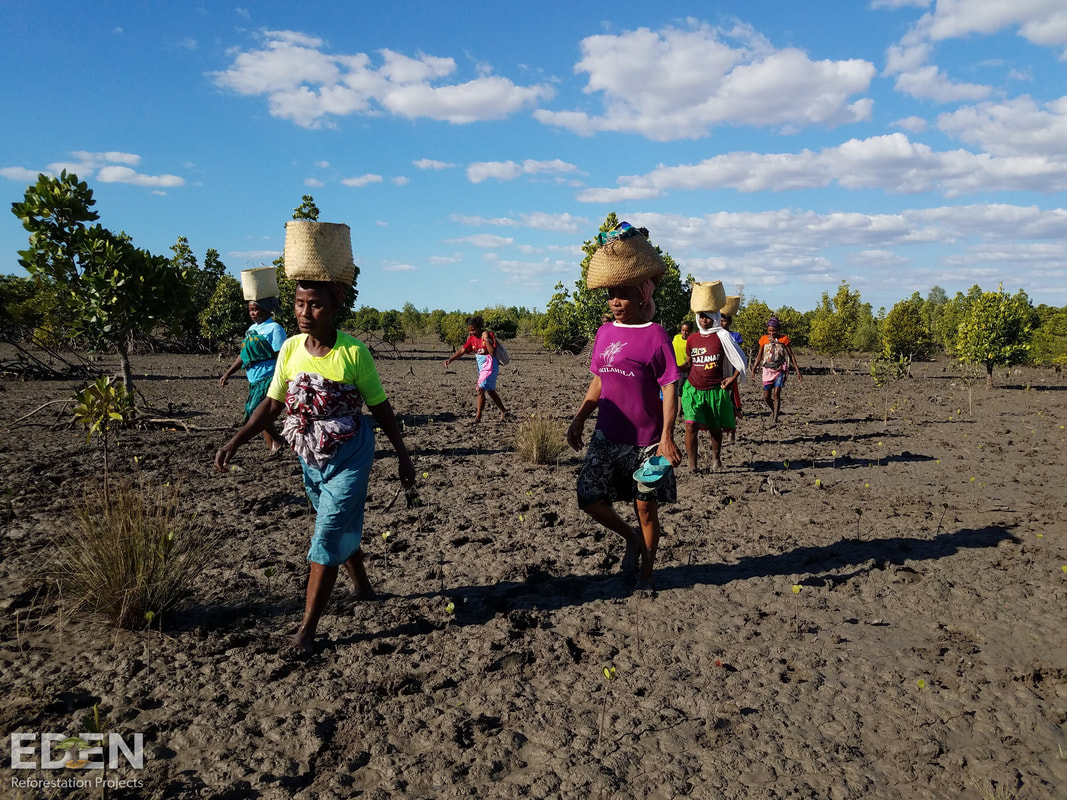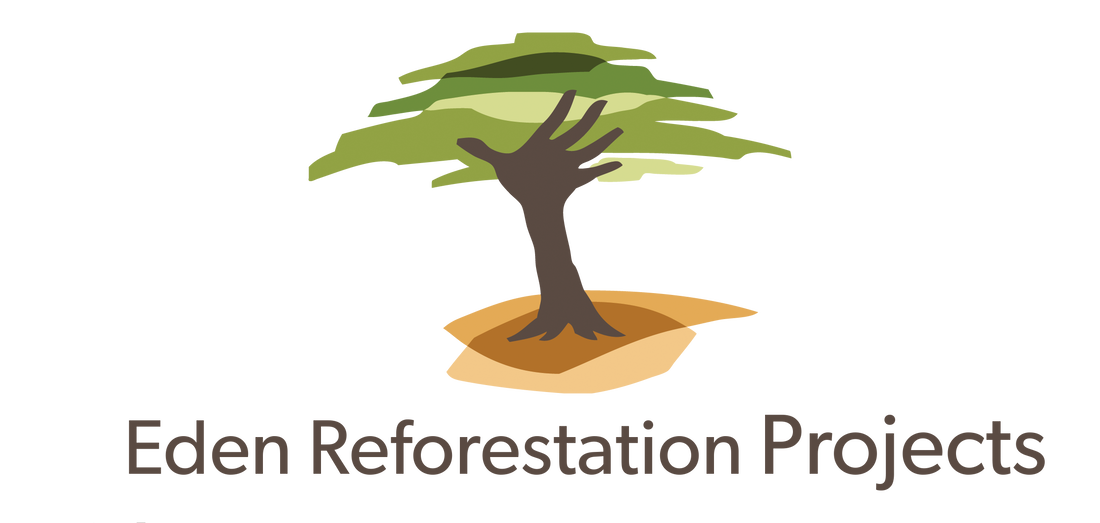|
Madagascar - the name conjures up pictures of lush forests thriving with life. However, the reality is drastically different. With only 10% of the island’s forests remaining, the state of the wildlife in Madagascar is in stark contrast to the jungle that King Julien and his legion of lemurs call home in the DreamWorks animated movie.
|
Madagascar, the fourth largest island in the world, lies in the Indian Ocean having split from mainland Africa 88 million years ago. The island is home to 80% of the world’s endemic species, (species that are exclusive to one location). The fact Madagascar is a biodiversity hotspot is linked to the island's unique ecosystems, of which its mangrove forests are the powerhouses!
However, Madagascan mangrove forests are in a sharp decline due to deforestation for charcoal and timber production. Entire mangrove estuaries are now gone taking with them the island's natural flood barriers. The situation is so bad that from space, the red soil being seen washed out to sea, has led to astronauts labelling Madagascar ‘The Bleeding Island’.
Images care of Nasa Earth Observatory
Planting more mangrove trees is part of the solution, along with providing an economic incentive for people who rely on mangroves for income to protect these multitasking marvels. That’s why JUST ONE Tree, alongside our partners at Eden Reforestation Projects, are planting 500,000 mangroves in Ankilahila (situated on the north-west of the island), over the next 5 years. We’re delighted to be helping the biodiversity to flourish and providing economic opportunities for the local community.
But why mangroves and why in Madagascar?
1. Carbon sequestration
A study by the Australian Institute of Marine Habitats shows that, as coastal habitats, mangroves account for a whopping 14% of the carbon sequestered by oceans globally! This makes them front runners for reforestation projects. Global mangrove forests trap 3 billion metric tons of carbon from the atmosphere, mainly underground, in their extensive root systems and in the soil – that’s more carbon than in tropical rainforests.
A study by the Australian Institute of Marine Habitats shows that, as coastal habitats, mangroves account for a whopping 14% of the carbon sequestered by oceans globally! This makes them front runners for reforestation projects. Global mangrove forests trap 3 billion metric tons of carbon from the atmosphere, mainly underground, in their extensive root systems and in the soil – that’s more carbon than in tropical rainforests.
2. Desalination
Climate change is leading to an increase in the saltiness of soils and coastal waters. According to Madagascar’s National Bureau for Coordination of Climate Change, the salination of water and land is leading to food insecurity. However, mangroves thrive in salty water, where other plants may struggle to survive. In areas where groundwater and coastal water are becoming increasingly salinated, mangroves could help to desalinate the water, protecting ecosystems like fish and coral reefs, and improving the quality of essential water sources for local communities, their livestock and crops.
Climate change is leading to an increase in the saltiness of soils and coastal waters. According to Madagascar’s National Bureau for Coordination of Climate Change, the salination of water and land is leading to food insecurity. However, mangroves thrive in salty water, where other plants may struggle to survive. In areas where groundwater and coastal water are becoming increasingly salinated, mangroves could help to desalinate the water, protecting ecosystems like fish and coral reefs, and improving the quality of essential water sources for local communities, their livestock and crops.
|
3. Essential habitats
Ankilahila is comprised of 183 hectares. By nurturing and expanding these Mangrove forests, JUST ONE Tree is helping to maintain and expand the habitats of a wide range of insects, birds and mammals. Many of these, like the Coquerel’s sifaka (a type of lemur) and the fossa (a cat-like animal), are only found in Madagascar and are endangered due to habitat destruction. With the Coquerel’s sifaka’s penetrating stare and cute, fluffy body, one Google image search of these tropical primates will have you falling in love with their adorable goofiness. |
Meanwhile, the mangroves' sprawling root system provides a vital nursery for transient fish, shrimp and crab species that feed on the bacteria and detritus on the trees, whilst protecting them in the dense undergrowth from hungry predators. The International Union for the Conservation of Nature recognises that, by nurturing marine nurseries, mangroves support ocean biodiversity and can help sustain seafood supply chains. This means that growing mangrove forests supports the health of the neighbouring coral reefs which in turn helps ensure plentiful fish stocks for those that rely on the sea for their livelihood.
|
4. Protection from extreme weather
As global temperatures rise, extreme weather events like cyclones and floods, will become increasingly frequent in the tropics. However, it isn’t always necessary to build large-scale concrete infrastructure to defend the land from the sea. Studies have shown that mangroves limit the level of coastal erosion and create a buffer zone that protects island communities from extreme weather. |
5. Providing sustainable economic opportunities
At JUST ONE Tree we recognise the necessity to provide sustainable incomes for those in the areas where we plant. In doing so, we can support communities to end their current destructive and unsustainable relationship with their natural environment.
At JUST ONE Tree we recognise the necessity to provide sustainable incomes for those in the areas where we plant. In doing so, we can support communities to end their current destructive and unsustainable relationship with their natural environment.
As a result, in Madagascar, we have partnered with Eden Reforestation Projects. They have an 'Employ to Plant' strategy which ensures that local people are hired to carry out the restoration of the land and prevents the need for mangroves to be cut down for building materials and economic gain from charcoal production. This provides a long-term, sustainable and community-orientated solution to mangrove deforestation in Madagascar.
So there you have it. Five reasons why mangroves and why Madagascar. Our carefully selected plot was chosen to have maximum environmental and social impact. With your help, we hope we can continue supporting local communities to stop this unique and beautiful island bleeding.
What's more, as part of our festive gift sets, you’ll be able to choose to plant trees in Madagascar as a present. Head to our JUST ONE Tree shop to find out more.
What's more, as part of our festive gift sets, you’ll be able to choose to plant trees in Madagascar as a present. Head to our JUST ONE Tree shop to find out more.


















